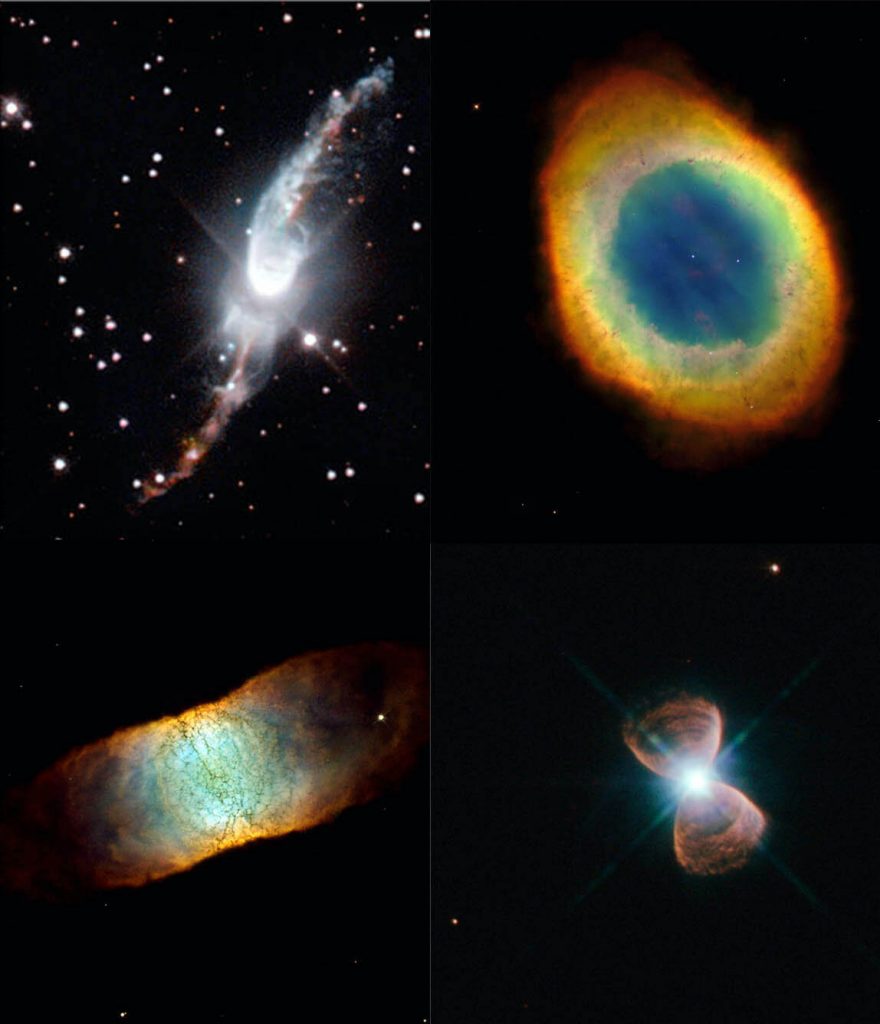
One of the harder to explain objects in the sky are planetary nebulae. These expanding clouds of often structured gas are formed when Sun-like stars die and exhale their outer atmosphere. How this process leads to square looking concentric gas patterns, well, figuring that out was part of the justification to fund the Hubble Space Telescope, but even its great optics weren’t up to the challenge.
It turns out, the Atacama Large Millimeter/submillimeter Array (ALMA) was needed to study the wind morphology in fourteen planetary nebulae. By looking at the structure of the winds, they were able to conclude that a binary star origin can explain what we’re seeing. According to the press release: They estimate the binary’s changing influence on the wind and nebula as the primary star evolves, its wind increases, and the separation grows, and report that they can successfully explain the various nebular morphologies in this evolutionary framework.
In this model, different shapes are driven by different geometries, masses, and evolutionary stages. With so many variables that can change, we can get the seemingly infinite combinations of structures we observe.
You can read about this work in the latest issue of Science in a paper with first author Michael Funk.
More Information
Center for Astrophysics | Harvard & Smithsonian press release
“(Sub-)Stellar Companions Shape the Winds of Evolved Stars,” Leen Decin et al., 2020 Sep. 18, Science




 Join the Crew!
Join the Crew!
 Escape Velocity Space News
Escape Velocity Space News
0 Comments